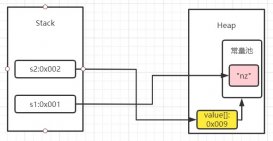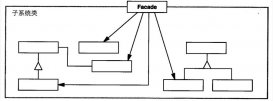简介
官方介绍
Project Lombok is a java library that automatically plugs into your editor and build tools, spicing up your java. Never write another getter or equals method again, with one annotation your class has a fully featured builder, automate your logging variables, and much more.
翻译之后就是:
Lombok 项目是一个 Java 库,它会自动插入您的编辑器和构建工具中,简化您的 Java 。 不需要再写另一个 getter、setter、toString 或 equals 方法,带有一个注释的您的类有一个功能全面的生成器,可以自动化您的日志记录变量,以及更多其他功能
使用
添加maven依赖
|
1
2
3
4
5
6
|
<dependency> <groupId>org.projectlombok</groupId> <artifactId>lombok</artifactId> <version>1.18.16</version> <scope>provided</scope></dependency> |
注意: 在这里 scope 要设置为 provided, 防止依赖传递给其他项目
安装插件(可选)
在开发过程中,一般还需要配合插件使用,在 IDEA 中需要安装 Lombok 插件即可
为什么要安装插件?
首先在不安装插件的情况下,代码是可以正常的编译和运行的。如果不安装插件,IDEA 不会自动提示 Lombok 在编译时才会生成的一些样板方法,同样 IDEA 在校验语法正确性的时候也会提示有问题,会有大面积报红的代码
示例
下面举两个栗子,看看使用 lombok 和不使用的区别
创建一个用户类
不使用 Lombok
|
1
2
3
4
5
6
7
8
9
10
11
12
13
14
15
16
17
18
19
20
21
22
23
24
25
26
27
28
29
30
31
32
33
34
35
36
37
38
39
40
41
42
43
44
45
46
47
48
49
50
51
52
53
54
55
56
57
58
59
60
61
62
63
64
65
66
67
68
69
|
public class User { private Integer id; private Integer age; private String realName; public User() { } @Override public boolean equals(Object o) { if (this == o) { return true; } if (o == null || getClass() != o.getClass()) { return false; } User user = (User) o; if (!Objects.equals(id, user.id)) { return false; } if (!Objects.equals(age, user.age)) { return false; } return Objects.equals(realName, user.realName); } @Override public int hashCode() { int result = id != null ? id.hashCode() : 0; result = 31 * result + (age != null ? age.hashCode() : 0); result = 31 * result + (realName != null ? realName.hashCode() : 0); return result; } @Override public String toString() { return "User{" + "id=" + id + ", age=" + age + ", realName='" + realName + '\'' + '}'; } public Integer getId() { return id; } public void setId(Integer id) { this.id = id; } public Integer getAge() { return age; } public void setAge(Integer age) { this.age = age; } public String getRealName() { return realName; } public void setRealName(String realName) { this.realName = realName; }} |
使用Lombok
|
1
2
3
4
5
6
|
@Datapublic class User { private Integer id; private String username; private Integer age;} |
使用 @Data 注解会在编译的时候自动生成以下模板代码:
- toString
- equals
- hashCode
- getter 不会对 final 属性生成
- setter 不会对 final 属性生成
- 必要参数的构造器
关于什么是必要参数下面会举例说明
全部注解
上面已经简单看了一下 @Data 注解,下面看下所有的可以用的注解
@NonNull 注解在字段和构造器的参数上。注解在字段上,则在 setter, constructor 方法中加入判空,注意这里需要配合 @Setter、@RequiredArgsConstructor、@AllArgsConstructor 使用;注解在构造器方法参数上,则在构造的时候加入判空
@Cleanup 注解在本地变量上。负责清理资源,当方法直接结束时,会调用 close 方法
@Setter 注解在类或字段。注解在类时为所有字段生成setter方法,注解在字段上时只为该字段生成setter方法,同时可以指定生成的 setter 方法的访问级别
@Getter 使用方法同 @Setter,区别在于生成的是 getter 方法
@ToString 注解在类上。添加toString方法
@EqualsAndHashCode 注解在类。生成hashCode和equals方法
@NoArgsConstructor 注解在类。生成无参的构造方法。
@RequiredArgsConstructor 注解在类。为类中需要特殊处理的字段生成构造方法,比如 final 和被 @NonNull 注解的字段。
@AllArgsConstructor 注解在类,生成包含类中所有字段的构造方法。
@Data 注解在类,生成setter/getter、equals、canEqual、hashCode、toString方法,如为final属性,则不会为该属性生成setter方法。
@Value 注解在类和属性上。如果注解在类上在类实例创建后不可修改,即不会生成 setter 方法,这个会导致 @Setter 不起作用
@Builder 注解在类上,生成构造器
@SneakyThrows
@Synchronized 注解在方法上,生成同步方法
@With
日志相关: 注解在类,生成 log 常量,类似 private static final xxx log
- @Log java.util.logging.Logger
- @CommonsLog org.apache.commons.logging.Log
- @Flogger com.google.common.flogger.FluentLogger
- @JBossLog org.jboss.logging.Logger
- @Log4j org.apache.log4j.Logger
- @Log4j2 org.apache.logging.log4j.Logger
- @Slf4j org.slf4j.Logger
- @XSlf4j org.slf4j.ext.XLogger
关于所有的注解可以查看 https://projectlombok.org/features/all
综合实例
综合实例一
|
1
2
3
4
5
6
7
8
9
10
11
12
13
14
15
16
17
18
19
20
21
22
23
24
25
26
27
28
29
30
31
32
33
34
35
36
37
38
39
40
41
42
43
44
45
|
import lombok.AccessLevel;import lombok.AllArgsConstructor;import lombok.Builder;import lombok.EqualsAndHashCode;import lombok.Getter;import lombok.NonNull;import lombok.RequiredArgsConstructor;import lombok.Setter;import lombok.ToString;@Getter // 生成 getter@AllArgsConstructor // 生成所有的参数@RequiredArgsConstructor // 生成必要参数的构造器@ToString // 生成 toString@EqualsAndHashCode // 生成 equals 和 hashCode@Builder // 生成一个 builderpublic class UserLombok { // 创建 setter 并且校验 id 不能为空 @Setter @NonNull private Integer id; // 创建 setter 且生成方法的访问级别为 PROTECTED @Setter(AccessLevel.PROTECTED) private Integer age; // 创建 setter 不校验是否为空 @Setter private String realName; // 构造器,校验 id 不能为空 public UserLombok(@NonNull Integer id, Integer age) { this.id = id; this.age = age; } /** * 自定义 realName 的 setter 方法,这个优先高于 Lombok * @param realName 真实姓名 */ public void setRealName(String realName) { this.realName = "realName:" + realName; }} |
具体生成的类为
|
1
2
3
4
5
6
7
8
9
10
11
12
13
14
15
16
17
18
19
20
21
22
23
24
25
26
27
28
29
30
31
32
33
34
35
36
37
38
39
40
41
42
43
44
45
46
47
48
49
50
51
52
53
54
55
56
57
58
59
60
61
62
63
64
65
66
67
68
69
70
71
72
73
74
75
76
77
78
79
80
81
82
83
84
85
86
87
88
89
90
91
92
93
94
95
96
97
98
99
100
101
102
103
104
105
106
107
108
109
110
111
112
113
114
115
116
117
118
119
120
121
122
123
124
125
126
127
128
129
130
131
132
133
134
135
136
137
138
139
140
141
142
143
144
145
146
147
148
149
150
151
152
153
154
155
156
157
158
159
160
161
162
163
164
165
166
167
168
169
170
171
172
173
|
import lombok.NonNull;public class UserLombok { @NonNull private Integer id; private Integer age; private String realName; public UserLombok(@NonNull Integer id, Integer age) { if (id == null) { throw new NullPointerException("id is marked non-null but is null"); } else { this.id = id; this.age = age; } } public void setRealName(String realName) { this.realName = "realName:" + realName; } public static UserLombok.UserLombokBuilder builder() { return new UserLombok.UserLombokBuilder(); } @NonNull public Integer getId() { return this.id; } public Integer getAge() { return this.age; } public String getRealName() { return this.realName; } public UserLombok(@NonNull Integer id, Integer age, String realName) { if (id == null) { throw new NullPointerException("id is marked non-null but is null"); } else { this.id = id; this.age = age; this.realName = realName; } } public UserLombok(@NonNull Integer id) { if (id == null) { throw new NullPointerException("id is marked non-null but is null"); } else { this.id = id; } } public String toString() { return "UserLombok(id=" + this.getId() + ", age=" + this.getAge() + ", realName=" + this.getRealName() + ")"; } public boolean equals(Object o) { if (o == this) { return true; } else if (!(o instanceof UserLombok)) { return false; } else { UserLombok other = (UserLombok)o; if (!other.canEqual(this)) { return false; } else { label47: { Object this$id = this.getId(); Object other$id = other.getId(); if (this$id == null) { if (other$id == null) { break label47; } } else if (this$id.equals(other$id)) { break label47; } return false; } Object this$age = this.getAge(); Object other$age = other.getAge(); if (this$age == null) { if (other$age != null) { return false; } } else if (!this$age.equals(other$age)) { return false; } Object this$realName = this.getRealName(); Object other$realName = other.getRealName(); if (this$realName == null) { if (other$realName != null) { return false; } } else if (!this$realName.equals(other$realName)) { return false; } return true; } } } protected boolean canEqual(Object other) { return other instanceof UserLombok; } public int hashCode() { int PRIME = true; int result = 1; Object $id = this.getId(); int result = result * 59 + ($id == null ? 43 : $id.hashCode()); Object $age = this.getAge(); result = result * 59 + ($age == null ? 43 : $age.hashCode()); Object $realName = this.getRealName(); result = result * 59 + ($realName == null ? 43 : $realName.hashCode()); return result; } public void setId(@NonNull Integer id) { if (id == null) { throw new NullPointerException("id is marked non-null but is null"); } else { this.id = id; } } protected void setAge(Integer age) { this.age = age; } public static class UserLombokBuilder { private Integer id; private Integer age; private String realName; UserLombokBuilder() { } public UserLombok.UserLombokBuilder id(@NonNull Integer id) { if (id == null) { throw new NullPointerException("id is marked non-null but is null"); } else { this.id = id; return this; } } public UserLombok.UserLombokBuilder age(Integer age) { this.age = age; return this; } public UserLombok.UserLombokBuilder realName(String realName) { this.realName = realName; return this; } public UserLombok build() { return new UserLombok(this.id, this.age, this.realName); } public String toString() { return "UserLombok.UserLombokBuilder(id=" + this.id + ", age=" + this.age + ", realName=" + this.realName + ")"; } }} |
综合实例二
|
1
2
3
4
5
6
7
8
9
10
11
12
13
|
@Valuepublic class UserLombok { @NonNull private Integer id; // 这里的 setter 不会生成,所有没用,这里反面示例 @Setter(AccessLevel.PROTECTED) private Integer age; private String realName;} |
@Value 是 ToString、EqualsAndHashCode、AllArgsConstructor、Getter 的组合注解
生成的代码
|
1
2
3
4
5
6
7
8
9
10
11
12
13
14
15
16
17
18
19
20
21
22
23
24
25
26
27
28
29
30
31
32
33
34
35
36
37
38
39
40
41
42
43
44
45
46
47
48
49
50
51
52
53
54
55
56
57
58
59
60
61
62
63
64
65
66
67
68
69
70
71
72
73
74
75
76
77
78
79
80
81
82
83
84
85
86
87
88
89
90
91
92
93
|
import lombok.NonNull;public final class UserLombok { @NonNull private final Integer id; private final Integer age; private final String realName; public UserLombok(@NonNull Integer id, Integer age, String realName) { if (id == null) { throw new NullPointerException("id is marked non-null but is null"); } else { this.id = id; this.age = age; this.realName = realName; } } @NonNull public Integer getId() { return this.id; } public Integer getAge() { return this.age; } public String getRealName() { return this.realName; } public boolean equals(Object o) { if (o == this) { return true; } else if (!(o instanceof UserLombok)) { return false; } else { UserLombok other; label44: { other = (UserLombok)o; Object this$id = this.getId(); Object other$id = other.getId(); if (this$id == null) { if (other$id == null) { break label44; } } else if (this$id.equals(other$id)) { break label44; } return false; } Object this$age = this.getAge(); Object other$age = other.getAge(); if (this$age == null) { if (other$age != null) { return false; } } else if (!this$age.equals(other$age)) { return false; } Object this$realName = this.getRealName(); Object other$realName = other.getRealName(); if (this$realName == null) { if (other$realName != null) { return false; } } else if (!this$realName.equals(other$realName)) { return false; } return true; } } public int hashCode() { int PRIME = true; int result = 1; Object $id = this.getId(); int result = result * 59 + ($id == null ? 43 : $id.hashCode()); Object $age = this.getAge(); result = result * 59 + ($age == null ? 43 : $age.hashCode()); Object $realName = this.getRealName(); result = result * 59 + ($realName == null ? 43 : $realName.hashCode()); return result; } public String toString() { return "UserLombok(id=" + this.getId() + ", age=" + this.getAge() + ", realName=" + this.getRealName() + ")"; }} |
综合实例三
日志使用
|
1
2
3
4
5
6
7
8
9
|
import lombok.extern.java.Log;@Logpublic class LogLombok { public void log() { log.info("打个日志"); }} |
生成后代码
|
1
2
3
4
5
6
7
8
9
10
11
12
|
import java.util.logging.Logger;public class LogLombok { private static final Logger log = Logger.getLogger(LogLombok.class.getName()); public LogLombok() { } public void log() { log.info("打个日志"); }} |
通过上面的示例,我们可以看出 Lombok 可以大大简化我们的代码
Lombok的优缺点
- 优点:
提高开发效率,自动生成getter/setter、toString、builder 等,尤其是类不断改变过程中,如果使用 IDEA 自动生成的代码,我们则需要不停的删除、重新生成,使用 Lombok 则自动帮助我们完成
让代码变得简洁,不用过多的去关注相应的模板方法,其中 getter/setter、toString、builder 均为模板代码,写着难受,不写还不行,而且在 java 14 已经开始计划支持 record, 也在帮我们从原生方面解决这种模板代码
属性做修改时,也简化了维护为这些属性所生成的getter/setter方法等
- 缺点:
不同开发人员同时开发同一个使用 Lombok 项目、需要安装 Lombok 插件
不利于重构属性名称,对应的 setter、getter、builder, IDEA 无法帮助自动重构
有可能降低了源代码的可读性和完整性,降低了阅读源代码的舒适度,谁会去阅读模板代码呢
解决编译时出错问题
编译时出错,可能是没有启用注解处理器。Build, Execution, Deployment > Annotation Processors > Enable annotation processing。设置完成之后程序正常运行。
避坑指南
-
尽量不要使用
@Data注解, 这个注解太全了,不利于维护,除非你知道你在干什么 -
Java 默认机制如果有其他构造器,则不会生成无参构造器,在使用
@AllArgsConstructor注解时,记得加上@NoArgsConstructor -
如果类定义还在变化阶段,不建议使用
@AllArgsConstructor注解 -
@Setter、@Getter注解如果需要可以缩小使用范围 -
@ToString注解默认不会生成父类的信息,如果需要生成需要 @ToString(callSuper = true) -
@RequiredArgsConstructor和@NoArgsConstructor尽量不要一起使用,无参构造器无法处理@NonNull,但在序列化/反序列化的还是需要提供无参的 -
当团队决定不再使用 Lombok 的时候,可以使用 Lombok 插件的 Delombok 一键去除,在
Refactor > Delombok中
再次注意- @AllArgsConstructor 尽量不要使用
参考
https://projectlombok.org
https://github.com/rzwitserloot/lombok
Lombok工作原理
工作原理来自网上资料
在Lombok使用的过程中,只需要添加相应的注解,无需再为此写任何代码。自动生成的代码到底是如何产生的呢?
核心之处就是对于注解的解析上。JDK5引入了注解的同时,也提供了两种解析方式。
- 运行时解析
运行时能够解析的注解,必须将@Retention设置为RUNTIME,这样就可以通过反射拿到该注解。java.lang.reflect反射包中提供了一个接口AnnotatedElement,该接口定义了获取注解信息的几个方法,Class、Constructor、Field、Method、Package等都实现了该接口,对反射熟悉的朋友应该都会很熟悉这种解析方式。
- 编译时解析
编译时解析有两种机制,分别简单描述下:
1)Annotation Processing Tool
apt自JDK5产生,JDK7已标记为过期,不推荐使用,JDK8中已彻底删除,自JDK6开始,可以使用Pluggable Annotation Processing API来替换它,apt被替换主要有2点原因:
- api都在com.sun.mirror非标准包下
- 没有集成到javac中,需要额外运行
2)Pluggable Annotation Processing API
JSR 269自JDK6加入,作为apt的替代方案,它解决了apt的两个问题,javac在执行的时候会调用实现了该API的程序,这样我们就可以对编译器做一些增强,javac执行的过程如下:
Lombok本质上就是一个实现了“JSR 269 API”的程序。在使用javac的过程中,它产生作用的具体流程如下:
- javac对源代码进行分析,生成了一棵抽象语法树(AST)
- 运行过程中调用实现了“JSR 269 API”的Lombok程序
- 此时Lombok就对第一步骤得到的AST进行处理,找到@Data注解所在类对应的语法树(AST),然后修改该语法树(AST),增加getter和setter方法定义的相应树节点
- javac使用修改后的抽象语法树(AST)生成字节码文件,即给class增加新的节点(代码块)
通过读Lombok源码,发现对应注解的实现都在HandleXXX中,比如@Getter注解的实现在HandleGetter.handle()。还有一些其它类库使用这种方式实现,比如Google Auto、Dagger等等。
以上就是Java Lombok简介、使用、工作原理、优缺点的详细内容,更多关于Java Lombok的资料请关注服务器之家其它相关文章!
原文链接:https://www.cnblogs.com/zyndev/p/13869418.html















